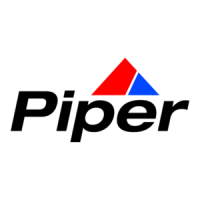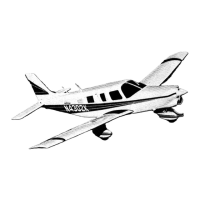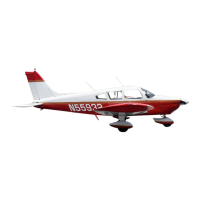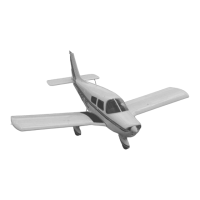LANCE II SERVICE MANUAL
SECTION I
INTRODUCTION
1-1. GENERAL. This manual contains
service and maintenance instructions
for the Piper
PA-32RT-300 and
PA-32RT-300T Lance II. designed
and manufactured as a versatile
airplane in
the personal and
business aviation field,
by the Piper Aircraft
Corporation,
Vero
Beach, Florida.
1-2.
SCOPE OF MANUAL.
Section II
comprise the routine
service part of
this manual,
Section III covers
inspections,
and Sections IV
through XIV comprise
maintenance
instructions. The
routine service
instructions include
ground handling
and routine servicing.
The inspection section includes
50, 100, 500, and 1000 hour inspections
which the
manufacture requires
for this airplane. The maintenance instructions
for the various systems
of
the airplane include
system discription,
troubleshooting,
removal and installation
of
components, and corrective
maintenance and testing as required.
Each major system of the
airplane is
covered in a separate section. Only
qualified personnel should perform
the
operations described in this manual.
The
description of the airplane included
in this section is limited to general information.
For more detailed description
of the various systems refer to the
appropriate section of this
manual.
For detailed operating
instructions
refer to the Pilot's
Information Manual
for the
airplane.
Section
II of this
manual also
gives leading
particulars
and principal
demensions,
along
with lubrication
charts and other related
routine service information.
1-3. DESCRIPTION.
The Lance II
PA-32RT-300 and
PA-32RT-300T
are single-engine,
low-wing monoplanes
of
all metal
construction,
with seats
available for
six passengers
(seventh
seat optional).
Paragraphs
1-4 through
1-16
provide
descriptions
of
major
components and systems.
1-4.
WING. The laminar
flow wing is
of all metal stressed
skin, full cantilever,
low-wing
design,
consisting
of two
wing panels
bolted to a
spar box assembly
in the
fuselage. The
wing tips
are removalbe.
The ailerons
are statically
balanced
and cable
and push
rod
controlled.
The trailing
edge
wing flaps
are manually
operated.
1-5.
EMPENNAGE.
The empennage
consists
of the
fin, rudder,
stabilator
and stabilator
trim
tabs.
The stabilator
is mounted
above
the
fin and rudder
in a
"T" tail
configuration.
The rudder
and stabilator are
statically balanced.
1-6. FUSELAGE.
The fuselage
consists of three
basic units:
The engine
section,
the cabin
section,
and the tail cone
section.
1-7.
LANDING
GEAR.
The tricycle
landing
gear is
hydraulically
operated,
fully
retractable
units consisting
of shock absorbing
air-oil oleo struts.
Isued:
1/3/78
A13
INTRODUCTION
1A13

